Willem De Kooning is one of the most influential artists to emerge from New York City after World War II. Willem De Kooning was an artist who was highly influential during his lifetime and also one of my own favorite Abstract Expressionism artists.
Willem De Kooning was a significant Abstract Expressionism artist. He was born in Holland but immigrated to the United States in 1926. During his lifetime, he played a significant role in helping to develop the Abstract Expressionism movement into the significant movement it is today. Read on to learn more about his life and influence on Abstract Expressionism art.
Table of Contents
- Willem De Kooning’s Life And Work Explored In An Insightful Biography
- Willem De Kooning’s 10 Most Important Works
- Excavation – By Willem De Kooning – (1950)
- Woman I – By Willem De Kooning – (1950-1952)
- Woman II- By Willem De Kooning – (1952)
- Easter Monday – By Willem De Kooning – (1955)
- Interchange – By Willem De Kooning – (1955)
- Gotham News – By Willem De Kooning – (1955)
- Attic – By Willem De Kooning – 1949)
- Marilyn Monroe – By Willem De Kooning – 1954)
- Door to the River – By Willem De Kooning – (1960)
- Untitled (Rochester) – By Willem De Kooning (1977)
- What Makes These Works By Wllem De Kooning Significant
- Frequently Asked Questions
- Related Questions
Willem De Kooning’s Life And Work Explored In An Insightful Biography
Willem de Kooning is widely regarded as one of the most important painters of the 20th century. Born in Rotterdam, Netherlands, in 1904. Willem De Kooning would become a leading figure in the Abstract Expressionist movement, producing a body of influential and groundbreaking work.
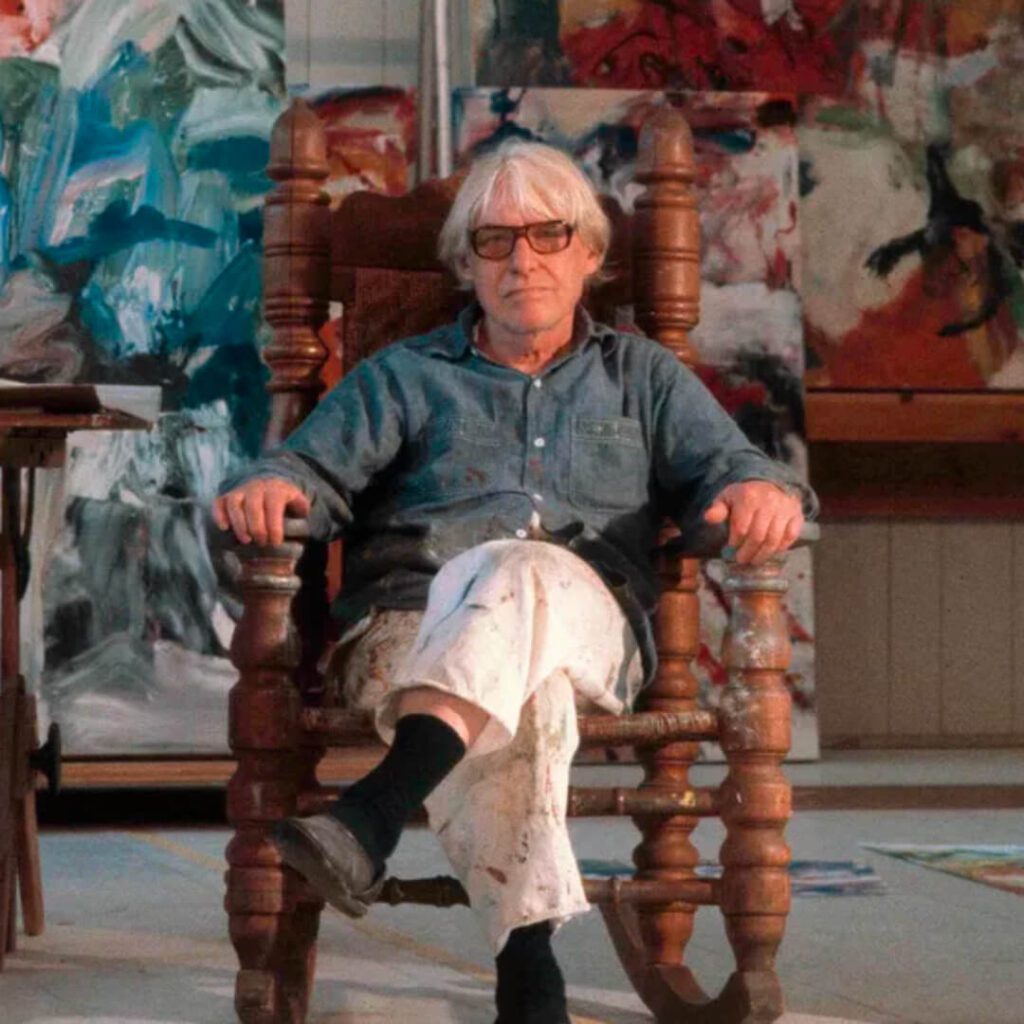
Willem De Kooning’s Early Years
De Kooning’s love for art began at a young age, and he enrolled in Rotterdam’s Academy of Fine Arts at just 12 years old. While studying there, he developed an interest in modern art, particularly the work of the Dutch painter Piet Mondrian.
In 1926, Willem de Kooning moved to the United States, settling in Hoboken, New Jersey. He supported himself by working odd jobs, such as house painter and carpenter, while continuing to paint in his spare time.
By the 1930s, de Kooning had become part of the emerging New York art scene. He met other artists such as Arshile Gorky, Jackson Pollock, and Franz Kline, and together they helped to define the Abstract Expressionist movement.
De Kooning’s early work was characterized by his use of biomorphic forms and a strong interest in the human figure, which would remain a constant in his art throughout his career. One consistency with his art was his fascination with the human form, particularly the female or feminine form.
Willem De Kooning’s Evolution As A Painter
In the 1940s, de Kooning began experimenting with abstraction, moving away from his earlier figurative work. His paintings from this period are notable for their vibrant colors and energetic brushwork. In 1948, he produced his first major abstract painting, “Excavation,” now considered a masterpiece of the movement.
During the 1950s, de Kooning continued to refine his abstract style. He became known for his large-scale canvases, often layered with thick paint and dynamic brushstrokes. The influence of his earlier figurative work was still evident in these paintings, as the shapes and forms often suggested the human figure.
Throughout the 1960s and 1970s, de Kooning’s style became more fluid and gestural. He began to incorporate a broader range of colors into his work, creating complex compositions that were both playful and serious. His paintings from this period are notable for their sense of movement and their exploration of texture and surface.
Willem De Kooning’s 10 Most Important Works
Willem De Kooning produced many works of art throughout his lifetime. There are also many artists and others that his work influenced.
Many people, if they do not understand Abstract Expressionism or do not fully comprehend De Kooning’s work, may wonder what makes these paintings significant.
De Kooning’s paintings are significant for their role in the development of Abstract Expressionism, one of the most important art movements of the 20th century. His bold use of color and gestural brushwork influenced generations of artists, and his explorations of abstraction and the human figure continue to inspire new generations of painters.
Here are ten of some of his more important and groundbreaking works of art and why they are considered significant
Excavation – By Willem De Kooning – (1950)
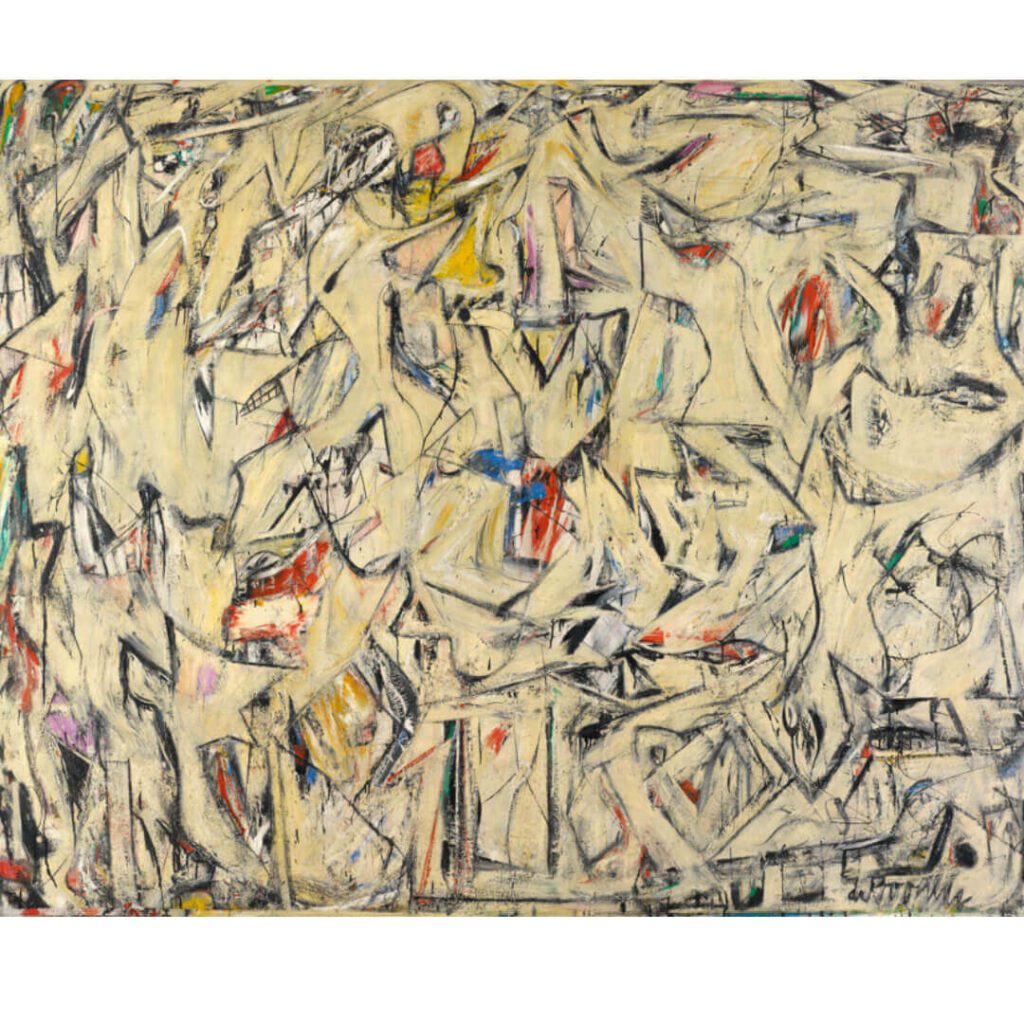
This large-scale painting is widely considered one of de Kooning’s masterpieces. It is characterized by its bold colors and thick, gestural brushstrokes.
“Excavation” is significant for its scale, complexity, and use of color and texture. It is a masterful example of de Kooning’s abstract style and is considered one of his most important works.
Woman I – By Willem De Kooning – (1950-1952)

This iconic painting depicts a female figure in an abstract, fragmented style. It is notable for its powerful imagery and controversial subject matter.
Woman II- By Willem De Kooning – (1952)
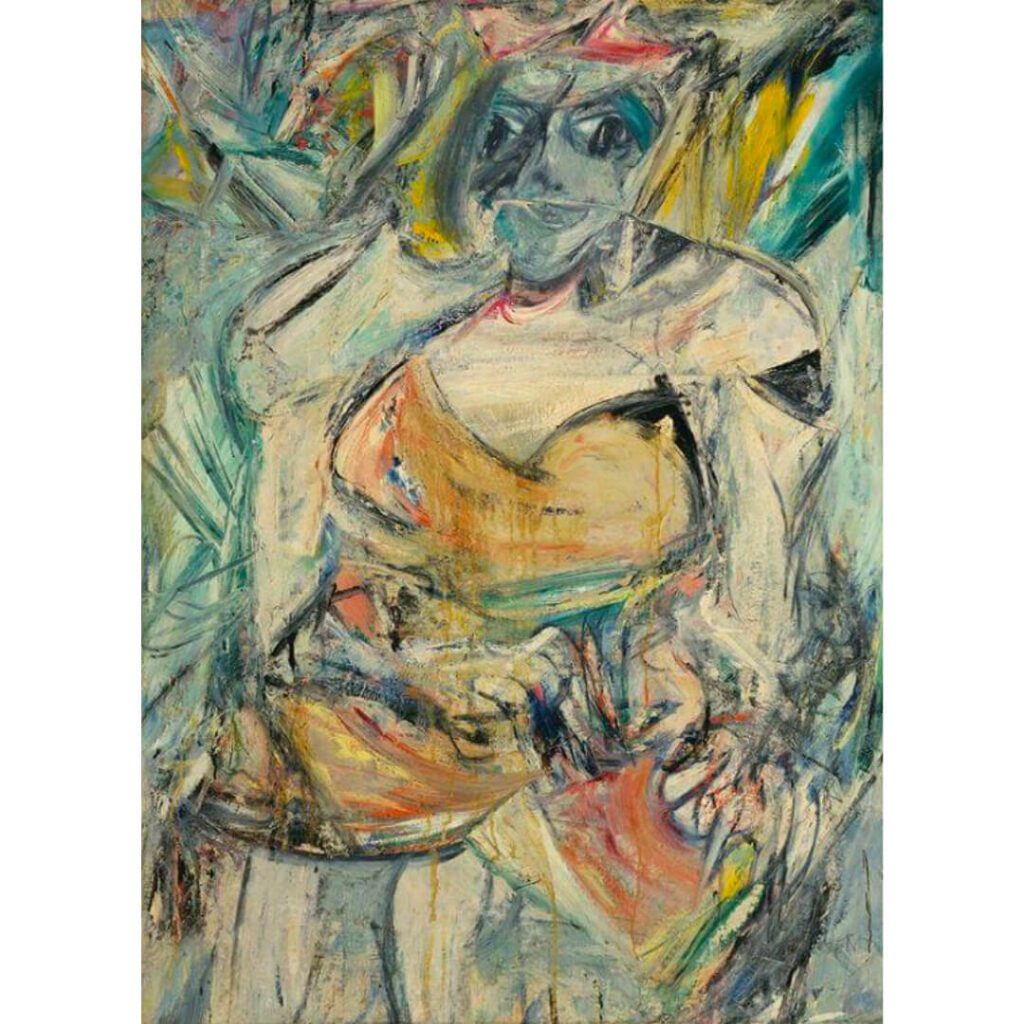
This painting is a companion piece to “Woman I” and features a similar fragmented female figure. It is notable for its complex composition and use of color.
“Woman I” and “Woman II” are significant for their powerful imagery and controversial subject matter. De Kooning’s fragmented, abstract depictions of the female figure challenged traditional notions of beauty and femininity and continue to provoke discussion and debate.
Easter Monday – By Willem De Kooning – (1955)
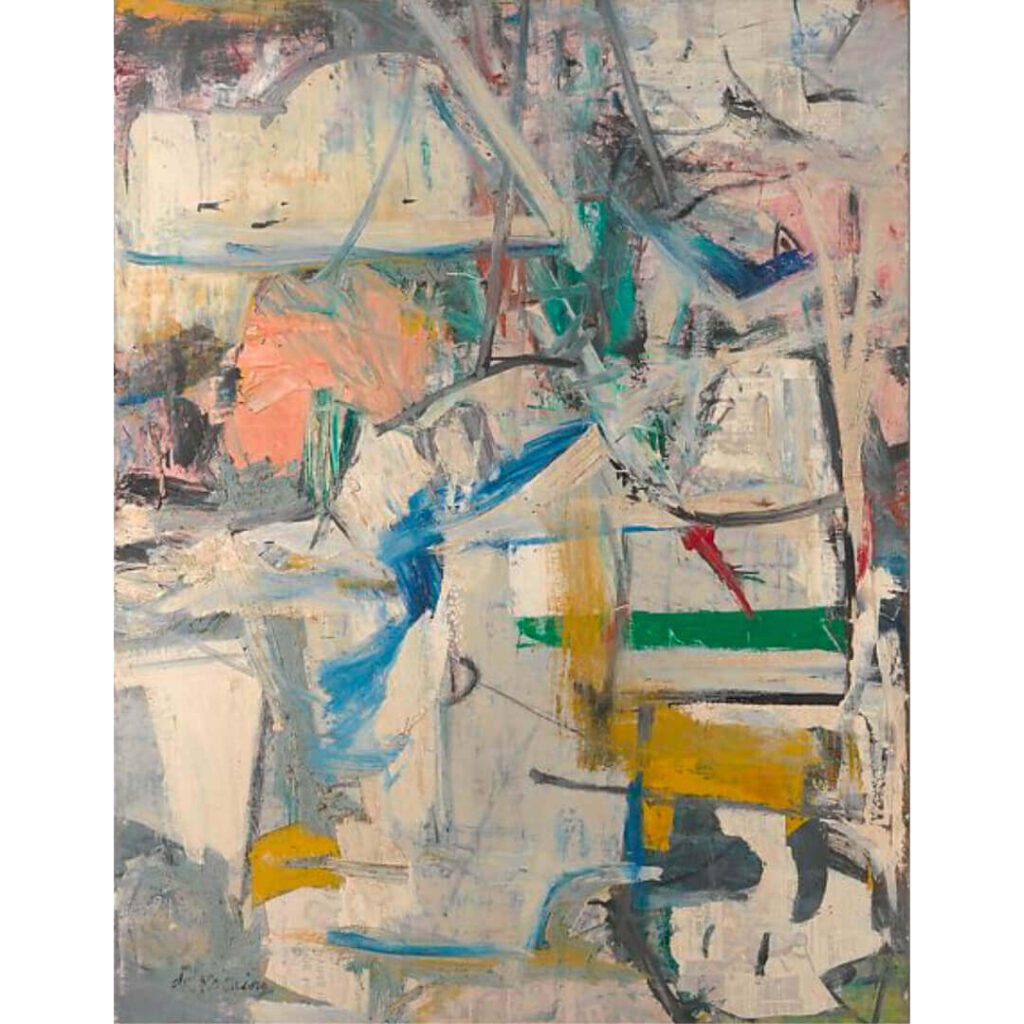
This painting is notable for its thick, impastoed surface and bold colors. It features abstract shapes that suggest the human figure.
Interchange – By Willem De Kooning – (1955)

This painting is characterized by its complex composition and layered, gestural brushwork. It is considered one of de Kooning’s most essential works.
“Easter Monday” and “Interchange” are significant for using layered, gestural brushwork and complex compositions. They are examples of de Kooning’s mature style, demonstrating his ability to create dynamic and engaging works of art.
Gotham News – By Willem De Kooning – (1955)

This painting is notable for its use of bright colors and dynamic brushwork. It features abstract shapes that suggest the urban landscape.
Attic – By Willem De Kooning – 1949)
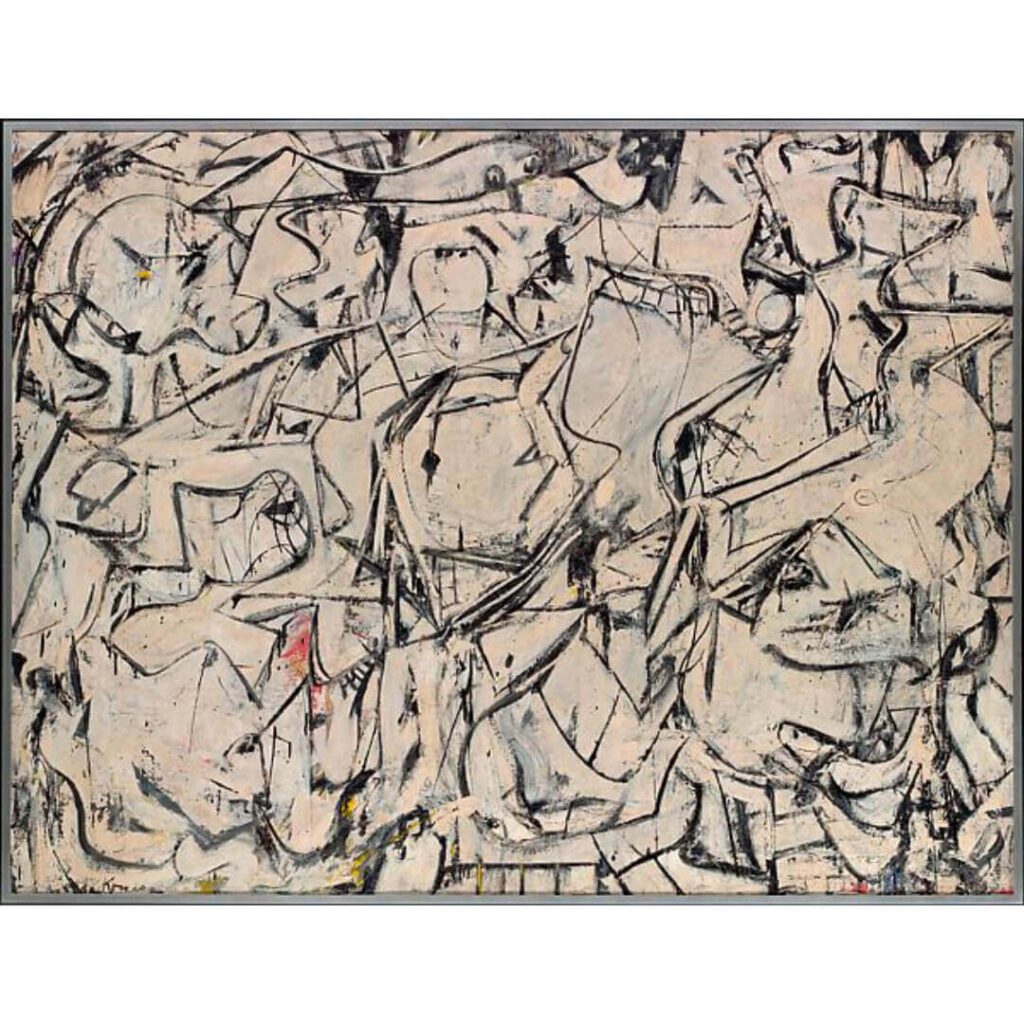
This painting is an early example of de Kooning’s abstract style, characterized by its bold brushstrokes and vibrant colors.
“Gotham News” and “Attic” are significant for their use of abstraction to suggest the urban landscape and interior spaces, respectively. They demonstrate de Kooning’s ability to create evocative, abstract compositions that suggest a sense of place and atmosphere.
Marilyn Monroe – By Willem De Kooning – 1954)
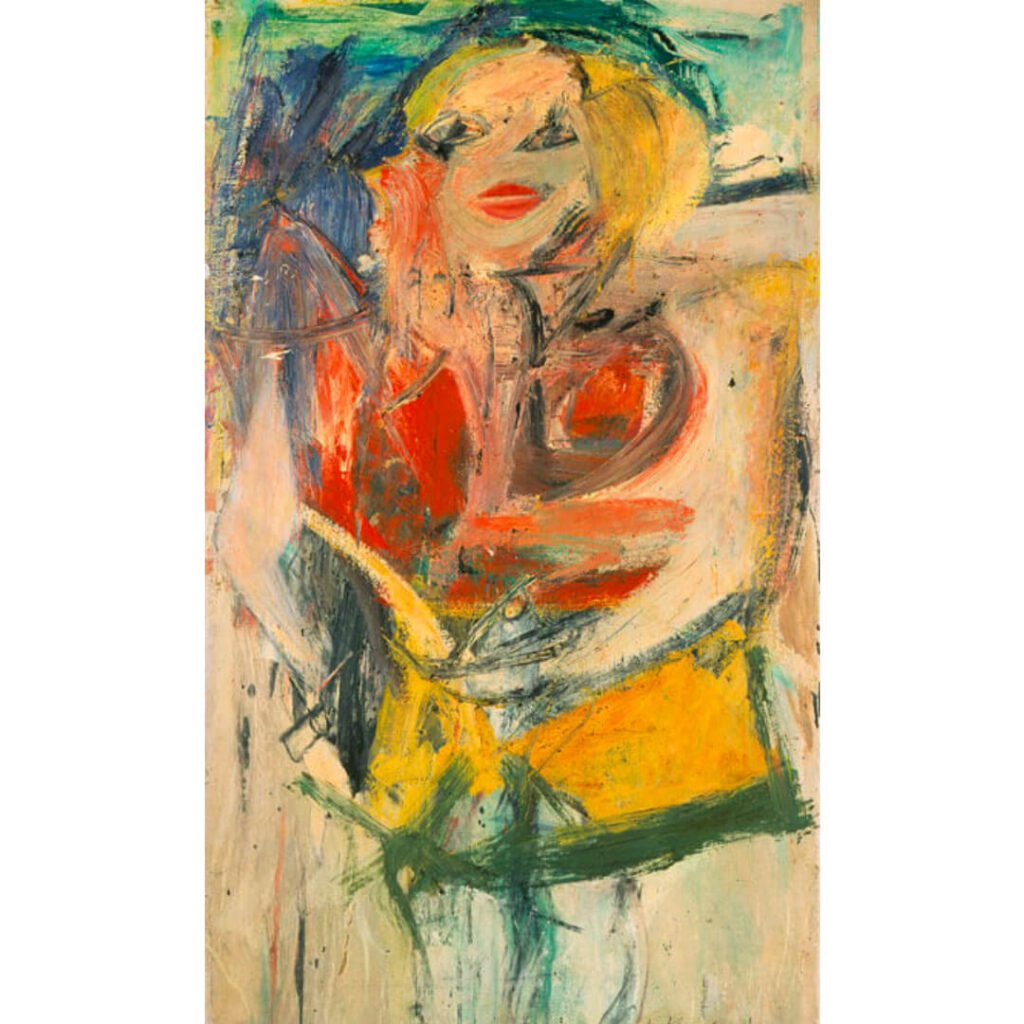
This series of paintings depicts the iconic Hollywood actress in de Kooning’s signature abstract style. They are notable for their fragmented composition and use of color.
The “Marilyn Monroe” series is significant for exploring celebrity and fame and using abstract forms to depict a recognizable figure. These paintings are a testament to de Kooning’s ability to capture the essence of his subject matter boldly and innovatively.
Door to the River – By Willem De Kooning – (1960)
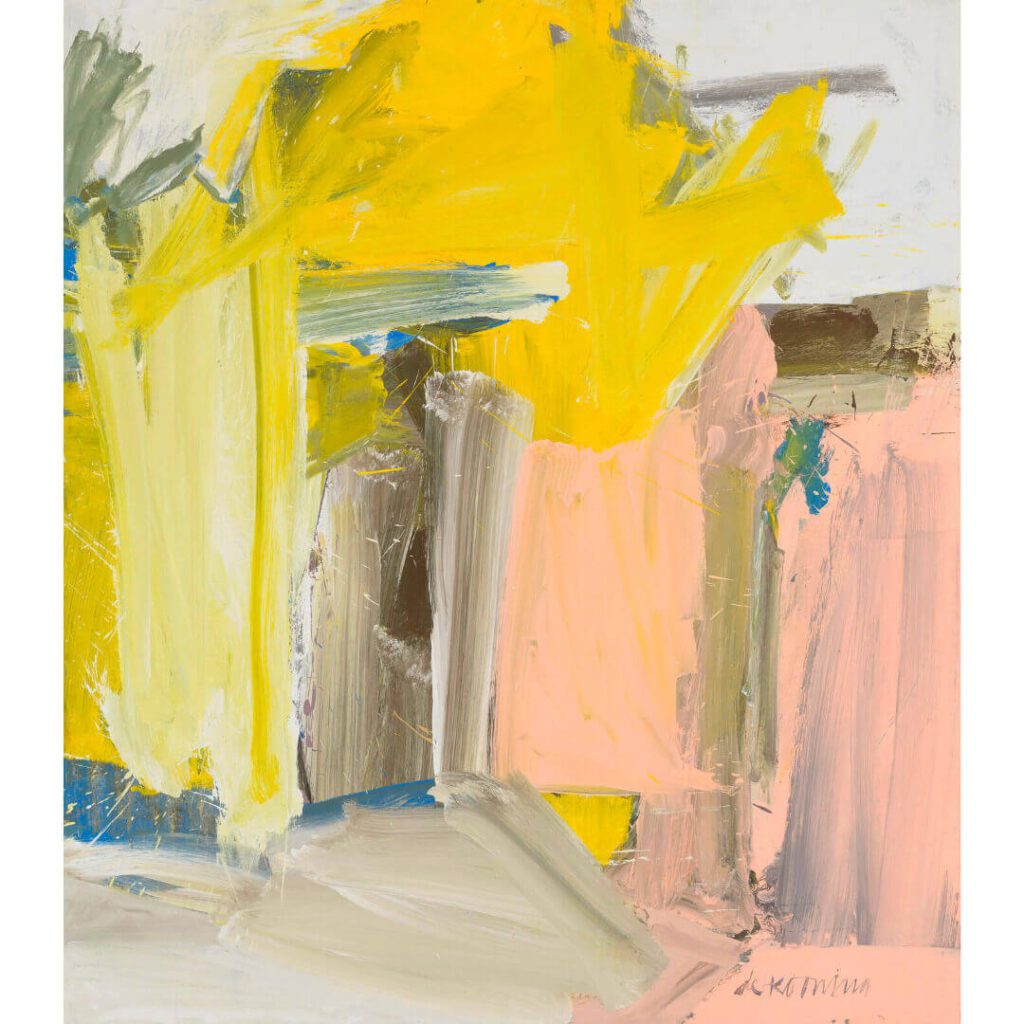
This painting is characterized by its fluid, gestural brushwork and use of multiple layers of paint. It features abstract forms that suggest water and landscape.
Untitled (Rochester) – By Willem De Kooning (1977)

This painting is notable for its playful use of color and texture. It features abstract shapes that suggest flowers and nature.
“Door to the River” and “Untitled (Rochester)” are significant for their playful use of color and texture and their suggestion of nature and landscape. They are examples of de Kooning’s later work demonstrating his continued ability to create engaging dynamic compositions.
What Makes These Works By Wllem De Kooning Significant
Many people, if they do not understand Abstract Expressionism or do not fully comprehend De Kooning’s work, may wonder what makes these paintings significant. Here are some of the reasons why Willem De Kooning is a significant painter:

Willem De Kooning’s Helped Develop Abstract Expressionism
De Kooning’s paintings are significant for their role in the development of Abstract Expressionism, one of the most important art movements of the 20th century. His bold use of color and gestural brushwork influenced generations of artists, and his explorations of abstraction and the human figure continue to inspire new generations of painters.
Willem de Kooning Was A Masterful Painter
Willem de Kooning was a masterful painter whose work continues to inspire and influence artists worldwide. His explorations of abstraction and the human figure, as well as his bold use of color and gestural brushwork, helped to define the Abstract Expressionist movement and establish him as one of the most important painters of the 20th century.
His 10 most significant works span the breadth of his career and are a testament to his skill and creativity and serve as a reminder of his enduring legacy.
Frequently Asked Questions
Who was Willem De Kooning, and what was his contribution to the Abstract Expressionism movement?
Willem De Kooning was a Dutch-born artist who immigrated to the United States in 1926 and became a prominent figure in the Abstract Expressionism movement. His innovative approach and unique style played a crucial role in shaping the movement into a significant force in the art world.
What are the key influences on Willem De Kooning’s artistic style and technique?
De Kooning’s art was influenced by a variety of sources, including his exposure to European modernism and his interactions with other artists in New York City. His work often incorporated elements of Cubism, Surrealism, and a distinctive form of gestural abstraction.
How did Willem De Kooning’s life in both Holland and the United States impact his artistic development?
De Kooning’s early experiences in Holland and later immigration to the United States greatly influenced his artistic perspective. The diverse cultural environments and exposure to different artistic movements significantly shaped his evolving style.
What are some of Willem De Kooning’s most famous works, and what themes are prevalent in his art?
De Kooning’s notable works include “Woman I” and “Excavation.” His art often explored themes of the human figure, women, and the dynamic interplay between abstraction and representation.
How did Willem De Kooning’s relationships with other artists, such as Jackson Pollock and Franz Kline, impact his work and the development of Abstract Expressionism?
De Kooning had significant interactions with fellow artists, fostering a collaborative and influential environment. These relationships played a crucial role in the evolution of Abstract Expressionism as a cohesive movement, with artists sharing ideas and pushing the boundaries of traditional artistic norms.
Can you elaborate on Willem De Kooning’s approach to the depiction of the human figure in his art?
De Kooning’s representation of the human figure was characterized by a dynamic and gestural style. He often deconstructed and reinterpreted the human form, blurring the line between abstraction and figuration in a way that was both challenging and innovative.
How did Willem De Kooning’s personal life and struggles impact his artistic output?
De Kooning faced personal challenges, including struggles with alcoholism and mental health. These difficulties, along with the changing landscape of his personal relationships, are reflected in the evolution of his artistic style and subject matter.
What role did Willem De Kooning play in the art scene of post-World War II New York City?
De Kooning was a central figure in the thriving art scene of post-World War II New York City. His presence and contributions helped establish the city as a global hub for avant-garde art, influencing subsequent generations of artists.
How did critics and the public respond to Willem De Kooning’s work during his lifetime?
De Kooning’s work received a range of responses from critics and the public. While some admired his bold experimentation and innovation, others found his abstract and sometimes controversial depictions challenging. Over time, his contributions have been widely recognized and celebrated.
What is Willem De Kooning’s lasting legacy in the world of Abstract Expressionism and contemporary art?
Willem De Kooning’s legacy is enduring, as he is considered a pioneer of Abstract Expressionism. His impact on the art world persists through his innovative techniques, influential relationships, and the ongoing relevance of his work in shaping the trajectory of contemporary art.
Anita Louise Art is dedicated to art education, great artists, and inspiring others to find and create their art. We love art that uplifts and inspires. #ArtToMakeYouSmile! #ArtToMakeYouHappy!
If you want to see any of my art, you can find out more by clicking here. If you are interested in what inspires me and my paintings, you can discover more by clicking here.
We have a free newsletter and would love you to be part of our community; you can subscribe to the newsletter by clicking here. I would be happy to talk to you if you have any questions. You can reach me, Anita, by clicking here.
Subscribe to our Anita Louise Art YouTube Channel with great videos and information by clicking here.
Join us for our podcast “5 Minutes With Art.” Spend just 5 minutes a week with us to discover and learn about great art and artists. You can find out more about our podcast by clicking here.
Related Questions
What Is The Cultural Significance Of Abstract Expressionism Art?
The cultural significance of abstract expressionism art is that it was a forerunner for the cultural changes in the United States in the 1950s and 1960s. The Abstract Expressionism movement started after World War II in the 1940s and continued into the 1950s. The world saw great cultural shifts in the 1950s and the 1960s.
By clicking here, you can learn more by reading What Is The Cultural Significance Of Abstract Expressionism Art?.
Who is the American Artist Jackson Pollock (1912-1956)?
Some consider Jackson Pollock to be one of the most brilliant American abstract artists that ever lived. Others consider his work of art as tossing around cans of paint by an artistic madman. One thing for certain is that Jackson Pollock is an important American abstract artist.
You can learn more by reading the blog Who is the American Artist Jackson Pollock (1912-1956)? by clicking here.
What Type Of Artist Is Andy Warhol?
Andy Warhol is a Pop Artist, one of the Pop Art Movement’s major figures. Andy Warhol’s artwork explored the relationship between what is known as the mass popular cultures of his day and art. He used many iconic American objects in his art and also painted many celebrities.
You can read more by reading our blog What Type Of Artist Is Andy Warhol? by clicking here.

